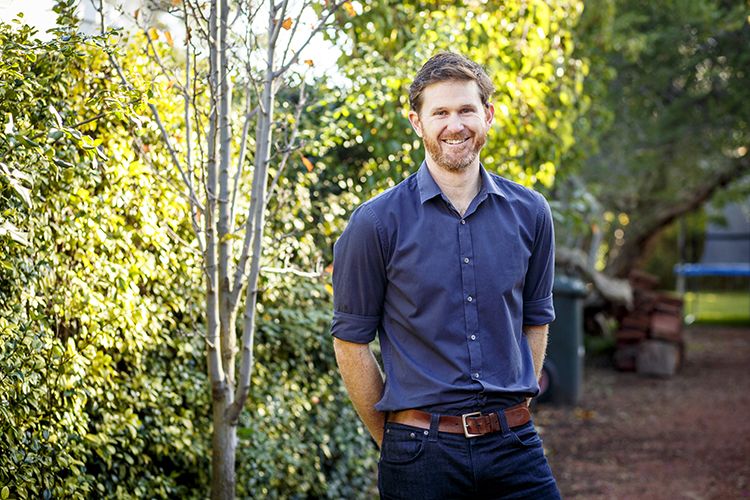
Nathan Greenhill. Credit: Jessica Wyld
President of AILA in Western Australia, and Coordinator of the Recreation and Landscape Unit with the WA Department of Parks and Wildlife, Nathan Greenhill shares his work with StreetChat.
Please, tell us about yourself. What drew you to landscape architecture?
Being a landscape architect and working at Parks and Wildlife is a series of lucky moments in time. At high school I was interested in geography, biology and technical drawing. I attempted art but was never that great at it, but always loved to make things at home and try to problem solve. I was on my way to studying environmental science when a good friend’s brother started landscape architecture and suggested I look into it. With a bit more research on the degree and the profession I decided to give it a go.
After finishing my degree another friend who was working for the Department of Conservation and Land Management, now Parks and Wildlife, let me know that they were looking for a short term contract to be filled. At age 22 I started and fourteen years later, having worked in some amazing locations around WA and with some very talented and passionate people, I am still here and still enjoying each moment.
Having a young family and seeing the benefit that the profession will make on their lives adds a great deal of satisfaction to me being a landscape architect. Although I didn’t know how having a family would make me appreciate my profession when I started studying at age 17, it now gives me a sense of purpose to ensure that we provide ‘landscapes’ of all types for them, and future generations.
Does your work with Parks and Wildlife differ from a more typical landscape architecture practice? How so?
It doesn’t differ in the reason why we do the work we do as landscape architects, which is to create spaces and opportunities for the community to help enrich their lives, be that in an urban or natural setting. The projects we are involved in at Parks and Wildlife are often very different than that of a typical landscape architect and we find ourselves in a privileged position as we are involved in some incredible projects.
I coordinate a team of 9 staff, two architectural draftspersons and 7 landscape architects who have a great diversity in interests and skills that complement each other as a team. Our core business is to work with staff like rangers, scientists and communities to provide valuable recreation opportunities in our parks and reserves that balance visitor use and the protection and maintenance of environmental and Aboriginal cultural values.
Our work spans from broad regional planning to understand and plan a Regions diversity and spectrum of recreation opportunities, down to full park planning, and site design including road and parking design, campgrounds, day use and picnic sites, walk trails and lookouts, buildings and small structures. Including toilets, we design a lot of toilets.
All the facilities and infrastructure that guide and manage visitors, while providing an attraction or assisting their ability to sustainably enjoy a place, is the work of landscape architects in collaboration with other Parks and Wildlife staff.
Because our projects are spread across WA we must design for a vast variety of landscapes, using different design solutions that fit the landscape and materials that maintain a sense of place. We also must have a great understanding of who visits our parks and why they are there. As you can imagine this varies significantly from the north of the state to the south and even from parks that are within 10km of each other. Knowing our visitor is critical to the work we do.
When working across a state as large as WA it is important to also create a sense of identity for our parks so that visitors know that they are managed by Parks and Wildlife. We aim to have a level of consistency in the work we do, in the materials and products we use and the form and style of our designs. This needs to be coordinated through the design process and requires a strong knowledge of a site and how it fits in the context of surrounding sites, parks and the state.
How much of your work is about balancing the built environment with the interest of the natural world? Is this important?
Design in natural areas has to be a balance between the built environment and the protection of the natural and cultural values of the site. A tip too far to a built solution may impact the experience of a place and detract from its character, not enough site design and planning and the natural and cultural values can be compromised.
A guiding principle for us is that the landscape is the reason why people visit our parks and reserves. People visit parks to view, explore and be surrounded in their natural settings. What we design should not detract from that landscape and should facilitate their ability to have those experiences.
However, when you include requirements for the protection of environmental and Aboriginal cultural values and the need to manage visitor risks in a natural environment, you start to form complex briefs for what are often viewed as simple outcomes. A clever design addresses all of those requirements while still appearing restrained, subtle and letting the landscape maintain the focus for visitors.
Parks and Wildlife is a conservation agency. We are in the business of protecting biodiversity for future generations but in most cases this is not at the cost of limiting people’s interaction with those areas. A key part of the protection of biodiversity is to ensure that the public knows what those values are, understands their importance and therefore makes conscious decisions to assist in protecting those values.
Even in our most fragile and diverse ecosystems, if a recreation opportunity is located correctly, designed appropriately, constructed with best practice methods and there is a level of interpretation and education of the values, we find that people respect those landscapes and manage their actions to reduce their impacts. We think that knowledge is a great tool for conservation and hope that advocacy for the importance of parks and their values is created through education, interpretation and continued public use of parks and reserves for recreation.
What are you excited to be working on with your team right now?
We’ve been really fortunate to be working on a few key projects that will provide great opportunities for people to be outdoors in our parks. Four staff have been dedicated to the design of The Gap and Natural Bridge in Torndirrup National Park, near Albany. This site has just recently been completed and is now open for visitors.
The Gap and Natural Bridge are significant tourist attractions in the Region where people can see the full force and power of the Southern Ocean as it hits land. The almost four year-long project has resulted in an amazingly well considered and crafted path network to two lookouts that allow visitors to safely experience this highly risky and biodiversity fragile site, while giving them a thrill at the same time. The level of detail and thought put in during design and managed during construction means that the infrastructure drapes over the site and works effortlessly with the character of the landscape.
We are also in the last year of a program that has seen us design and develop new campgrounds around the state. This Government initiative is a response to the growing demand for camping in our parks and reserves and a recognition of the changing nature of camping and how it can be provided. We are experiencing the use of a lot more caravans and camper trailers than before, as well as very large tents. Designing for these users is vastly different to the two person dome tent of yesteryear. The challenge has been to try to maintain the essence and value of camping in natural areas with a recognition of the larger footprint campers are now demanding. We are on track to deliver close to 450 new camp sites in 14 new or redeveloped campgrounds.
At any one time we could have 80 plus projects on the go and they vary from large to small projects. Each one is exciting and presents its own challenges. New projects come each week and I never know what kind of project the next phone call will bring. That keeps things exciting.
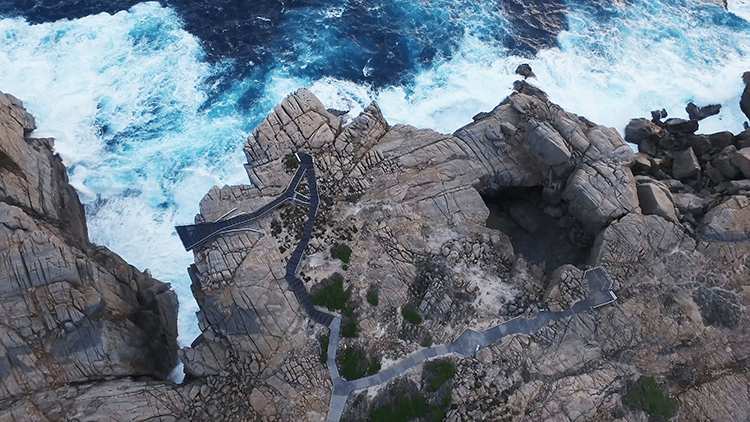
Aerial view over The Gap (left) and Natural Bridge in Torndirrup National Park. Credit: WA Parks & Wildlife
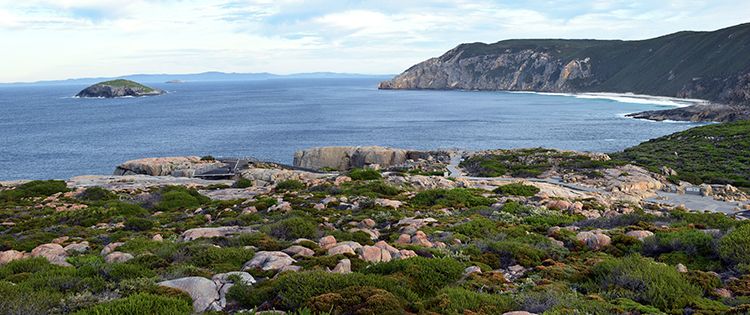
Site overview looking west. Credit: WA Parks & Wildlife
As a major city Perth’s population continues to grow; with that comes urban sprawl and its related challenges. How do we manage this and still retain local biodiversity? What part can LAs and AILA play here?
Perth’s urban sprawl alarms me, both at the scale and rate it is occurring. The loss of our landscape values is significant considering that the area surrounding Perth is one of 34 hot spots for biodiversity worldwide. A loss of these values is considerable in terms of ecosystems, but also the landscape’s resilience to cope with the impacts of climate change.
AILA, alongside other proactive institutes and groups, is committed to responding and providing direction to the many issues and impacts of Perth’s population growth and urban sprawl. This is being achieved by influencing and responding to Government policy as well as landscape architects being involved in the front end planning for appropriate land use and community development.
Recently AILA WA has been involved with and supported the Green Space Alliance which outlines objectives and addresses the need for policy reform to ensure the provision of quality green space for Perth. This, coupled with AILA’s lead role with the Living Cities Alliance, and the responses to many other discussion papers and policies show that this is an important and critical issue for Perth and WA and a great deal of people are committed to protecting our ‘green spaces’.
Award submissions recently received for the AILA WA 2016 Awards highlight that landscape architects in WA are being involved in a diverse range of projects that enhance the city we live in. Numerous projects add significant value to the urban fabric to improve useable public and green space for our growing population.
On reflection it means that Parks and Wildlife parks and reserves are ever more critical in providing open spaces to enable people to connect to the natural environment, and give them recreation opportunities. Another reason why I enjoy my job.
In Profile is a Q&A series featuring Australian influencers of the public realm.
Interviewees are players in the public sphere with compelling stories, not always landscape architects or affiliated with SFA.
To nominate a subject, please contact the editor via editor@streetfurniture.com
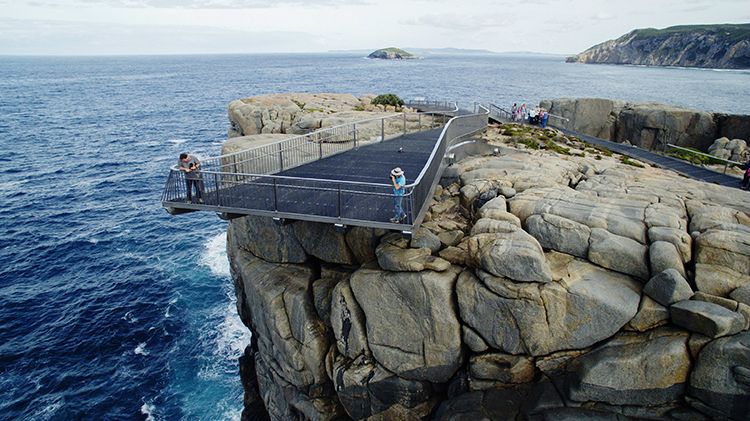
The Gap Lookout with elevated walkway beyond. Credit: WA Parks & Wildlife
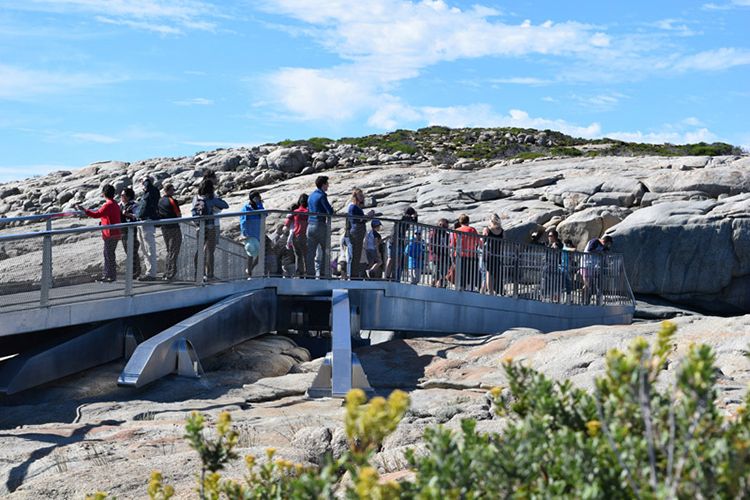
Cantilevered Beams 3, 4 and 5 supporting The Gap Lookout. Credit: WA Parks & Wildlife
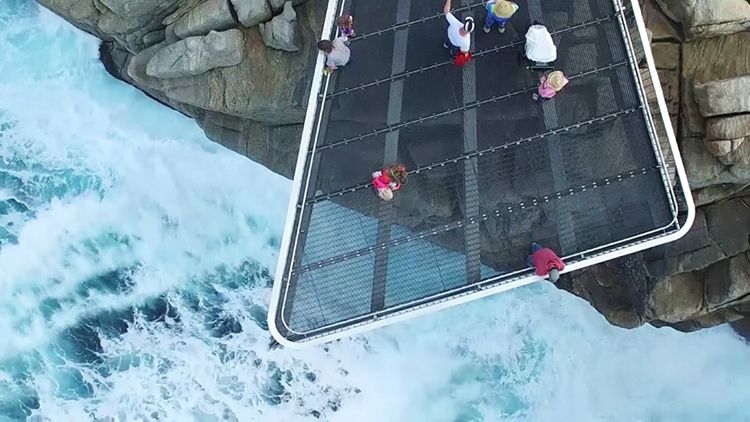
Viewing through transparent FRP decking on The Gap Lookout. Credit: WA Parks & Wildlife













